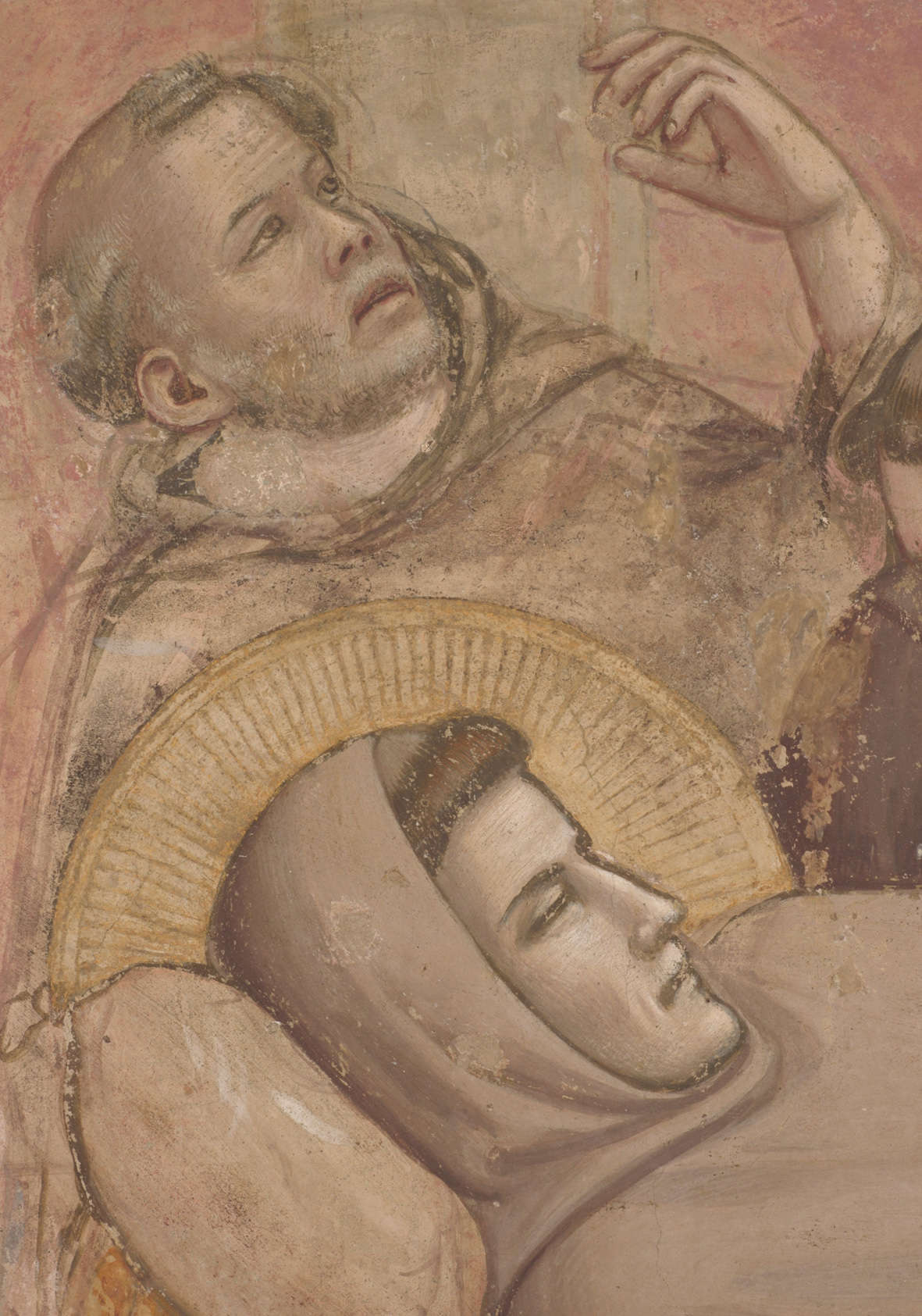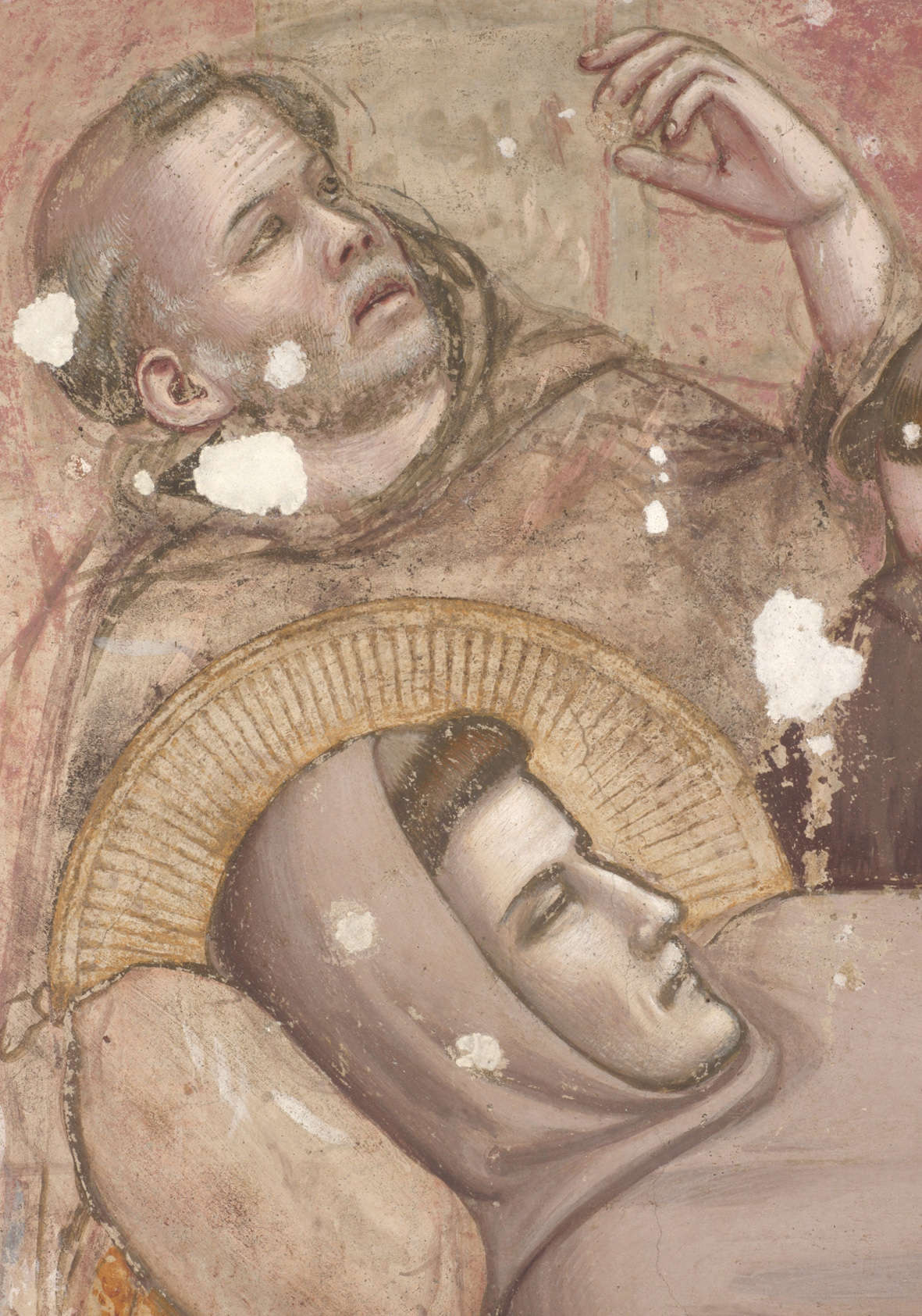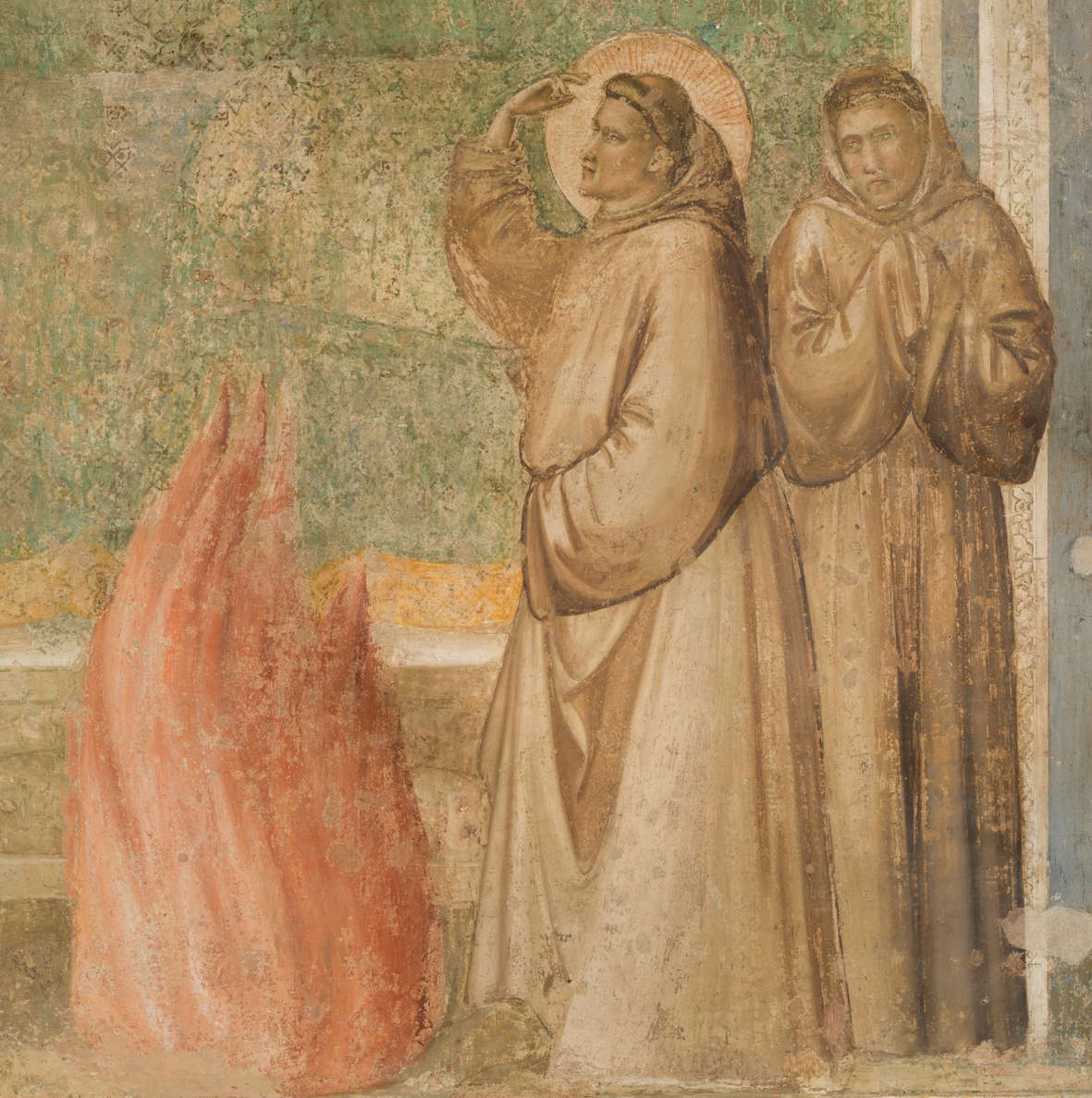A major restoration operation on Giotto ’s frescoed Stories of St. Francis in the Bardi Chapel of Santa Croce in Florence is revealing new details and restoring previously unseen legibility to the Florentine master’s masterpiece. The project is led by the Opificio delle Pietre Dure (OPD) and the Opera di Santa Croce, with support from the Fondazione CR Firenze and the ARPAI Association, and is directed by Cristina Acidini (president of the Opera di Santa Croce) and Emanuela Daffra (superintendent of the OPD). The scientific committee, on the other hand, is composed of Cristina Acidini (president), Giorgio Bonsanti, Sonia Chiodo, Marco Ciatti (who passed away last April), Emanuela Daffra, Andrea De Marchi, Emanuela Ferretti, Mauro Matteini, Antonella Ranaldi, and Serena Romano. Cost of the operation: more than 1 million euros, financed by Opera Santa Croce, OPD, Fondazione CR Firenze and ARPAI through Art Bonus (ARPAI’s donation is in memory of Florence and Paolo Marzotto, founders of the Association), and several private donations arrived through the fundraising drive, still ongoing, entitled #Giving4Giotto.
The restoration, which began in June 2022, arose from the need to address the precarious conservation conditions of the frescoes, which risked compromising the correct reading of the scenes. The conception of the project is due to the late Marco Ciatti, former superintendent of the OPD, who signed the preliminary agreement between the Opificio, Opera di Santa Croce and ARPAI. The first phase of the intervention, preceded by a thorough diagnostic campaign by the OPD, has already brought to light valuable information about Giotto’s working method and his technical experiments, restoring a work of art that had been partly concealed by previous interventions and natural deterioration. The OPD made use of advanced technologies such as laser scanners, thermal imaging cameras and no-touch diagnostics to study the integrity of the masonry and identify traces of earlier decorations, including preparatory drawings and sinopites. In addition, through UV light and thermal imaging investigations, details such as the structure of the original scaffolding and Giotto’s methods of operation were revealed.




Giotto, in particular, used a combination of fresco and dry painting techniques, exploiting organic binders, such as egg, to expand the color range and create more intense chiaroscuro effects. This restoration revealed hidden details and lost color fragments, which we can now appreciate thanks to the cleaning carried out. Among the surprises were also an earlier decoration, probably geometric, the discovery of the pontaie holes, that is, the holes for the scaffolding, which thus made it possible to know the exact layout of the structure that Giotto mounted to paint, and then again traces of the sinopites and preparatory drawing. It was also possible to reconstruct the course of the “days” of the tonachino, or the thin layer of plaster on which Giotto and collaborators had spread the colors. Also found were some test brushstrokes of which Giotto used to test how the colors would change after the plaster dried: these brushstrokes would then be concealed by the dry layers of colors, but today they are visible again as these additions have been lost (there is evidence of this in the scene with the Transit of St. Francis).
The restoration of Giotto’s work addressed several issues with a meticulous and experimental approach. After a preliminary testing phase, the most suitable materials and methodologies were selected to deal with the different requirements of the intervention. The portions of the pictorial film lifted from the plaster were re-glued to the support with acrylic adhesive, thus ensuring their stability. Surface cleaning was conducted using hot deionized water packs mixed with cellulosic paste and clay, or through layers of Japanese paper. Organic solvents were used when it was necessary to remove synthetic fixatives applied during previous restorations.
In some places, such as the ribs and medallions of the sails, lasers were used to remove accumulated layers of sediment. Thanks to these operations, especially in the lunettes and vaulting, an extraordinary pictorial freshness and richness of detail visible only up close were recovered, increasing regret for the lost parts.




The restoration also reduced the presence of soluble salts with absorbent compresses, while pictorial support adhesion problems were solved by injecting pre-mixed hydraulic lime-based mortars under the surface. Small gaps left by previous restorations were treated, replacing the old vinyl slurries with a mixture of lime and sand, more compatible with the work’s original materials.
With the cleaning completed, the final phase of the restoration is now being considered. The debate centers on how to present the pictorial cycle in a way that respects the history of the work and the conservation events it has undergone, but without compromising the possibility of fully appreciating Giotto’s exceptional spatial and artistic invention.
The Stories of St. Francis, painted by Giotto after 1317, have experienced numerous conservation vicissitudes. In 1730, the frescoes were covered by a whitewash, while funerary monuments added in the 19th century caused irreversible losses. It was not until 1851 that the frescoes were rediscovered and restored by Gaetano Bianchi, but they were later subjected to further intervention between 1957 and 1958 by Leonetto Tintori, who removed some additions in an attempt to bring to light the most authentic version of Giotto’s works.
The restoration is scheduled for completion insummer 2025. After completion, scaffolding will remain in place for an additional two months, allowing visitors to appreciate Giotto’s work up close. Fondazione CR Firenze will also offer preview guided tours of the restoration site through July 2025, to share with the public this exceptional opportunity to observe Giotto’s masterpiece being reborn.
 |
| New findings and valuable information emerge from the restoration of Giotto's frescoes in the Bardi Chapel |
Warning: the translation into English of the original Italian article was created using automatic tools. We undertake to review all articles, but we do not guarantee the total absence of inaccuracies in the translation due to the program. You can find the original by clicking on the ITA button. If you find any mistake,please contact us.